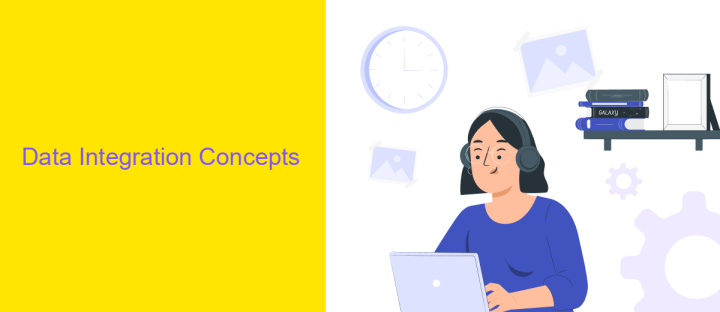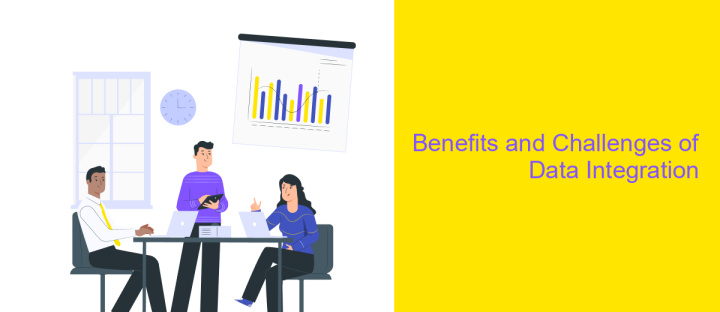What Do You Mean by Data Integration
Data integration refers to the process of combining data from different sources to provide a unified view. This practice is essential for businesses and organizations to make informed decisions, enhance operational efficiency, and gain comprehensive insights. By integrating various data streams, companies can break down silos, improve data quality, and ensure consistency across their systems.
Introduction
Data integration is a critical process in today's data-driven world, enabling organizations to combine data from various sources into a unified view. This process helps in improving data quality, consistency, and accessibility, making it easier for businesses to make informed decisions. By integrating data, companies can gain a comprehensive understanding of their operations, customer behavior, and market trends.
- Combining data from multiple sources
- Improving data quality and consistency
- Enhancing data accessibility
- Facilitating informed decision-making
- Gaining comprehensive insights
Effective data integration involves several techniques and tools, such as ETL (Extract, Transform, Load) processes, data warehousing, and data virtualization. These methods ensure that data from disparate sources is accurately consolidated and made available for analysis. As a result, organizations can leverage integrated data to drive innovation, optimize operations, and stay competitive in their respective industries.
Data Integration Concepts

Data integration involves combining data from different sources to provide a unified view. This process is essential for organizations that rely on diverse and complex data systems. By merging data from various databases, applications, and other sources, businesses can achieve a holistic perspective, enabling more informed decision-making. Data integration can be achieved through various methods, including ETL (Extract, Transform, Load) processes, data virtualization, and data warehousing.
One effective way to streamline data integration is by using specialized services like ApiX-Drive. ApiX-Drive simplifies the integration process by providing a user-friendly platform that connects different applications and data sources without requiring extensive coding knowledge. This service supports a wide range of integrations, making it easier for businesses to automate workflows and ensure data consistency across all systems. With tools like ApiX-Drive, organizations can focus on leveraging their data for strategic insights rather than getting bogged down in the technical complexities of integration.
Types of Data Integration

Data integration is a critical process in today's data-driven world, enabling organizations to combine data from various sources to provide a unified view. Understanding the different types of data integration can help in choosing the right approach for your business needs.
- Manual Data Integration: This involves manually collecting and combining data from different sources. While it can be time-consuming and prone to errors, it is often used for small-scale projects.
- Mediated Data Integration: Also known as data federation, this approach uses a middleware layer to create a virtual database, allowing users to query data from multiple sources without moving it.
- Application-Based Integration: This method uses software applications to extract, transform, and load (ETL) data from various sources into a central repository.
- Uniform Data Integration: This involves standardizing data formats and schemas across different sources, making it easier to combine and analyze data.
- Common Storage Integration: Also known as data warehousing, this approach involves consolidating data from various sources into a single, centralized storage system.
Each type of data integration has its own advantages and challenges. Selecting the appropriate method depends on factors such as the volume of data, the complexity of data sources, and the specific requirements of your organization.
Benefits and Challenges of Data Integration

Data integration is a crucial process for organizations looking to streamline their operations and make informed decisions. By combining data from various sources, businesses can achieve a unified view, which enhances the accuracy and comprehensiveness of their analyses. This leads to better decision-making and more efficient processes.
However, data integration also comes with its own set of challenges. These can range from technical difficulties to organizational hurdles. Understanding these challenges is essential for successfully implementing a data integration strategy.
- Data inconsistency: Different sources may have conflicting information.
- Data quality: Ensuring the integrated data is accurate and clean.
- Scalability: Handling increasing volumes of data efficiently.
- Security: Protecting integrated data from unauthorized access.
- Cost: Managing the expenses associated with data integration tools and processes.
Despite these challenges, the benefits of data integration far outweigh the drawbacks. Organizations that successfully integrate their data can gain a competitive edge, improve operational efficiency, and make more informed decisions. With careful planning and the right tools, data integration can be a powerful asset for any business.
Data Integration Best Practices
Implementing data integration effectively requires adherence to best practices to ensure seamless and reliable data flow. Begin by clearly defining your integration goals and requirements, understanding the data sources involved, and establishing a comprehensive data mapping strategy. Ensure data quality by implementing validation rules and cleansing processes to maintain accuracy and consistency. Additionally, leverage robust data integration tools like ApiX-Drive, which simplify the process of connecting various applications and automating data transfer, thereby reducing manual effort and minimizing errors.
Security is paramount in data integration; therefore, employ encryption protocols and access controls to safeguard sensitive information. Regularly monitor and audit integrations to detect and resolve issues promptly. Scalability should also be a consideration, allowing your integration framework to adapt to growing data volumes and evolving business needs. Lastly, maintain thorough documentation and provide training for your team to ensure they are well-versed in the integration processes and tools being used, fostering a culture of continuous improvement and operational efficiency.
FAQ
What is data integration?
Why is data integration important?
What are some common challenges in data integration?
How can I automate data integration processes?
What are the benefits of using a data integration tool?
Do you want to achieve your goals in business, career and life faster and better? Do it with ApiX-Drive – a tool that will remove a significant part of the routine from workflows and free up additional time to achieve your goals. Test the capabilities of Apix-Drive for free – see for yourself the effectiveness of the tool.

